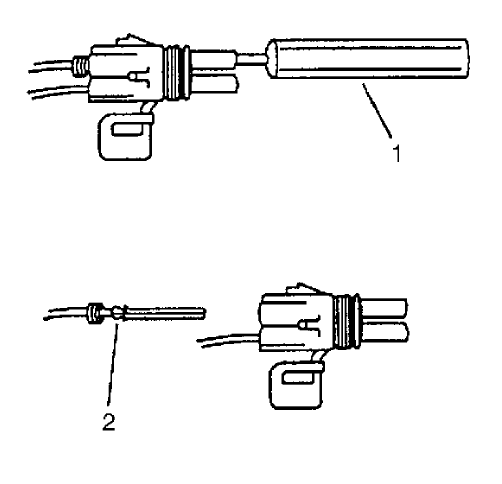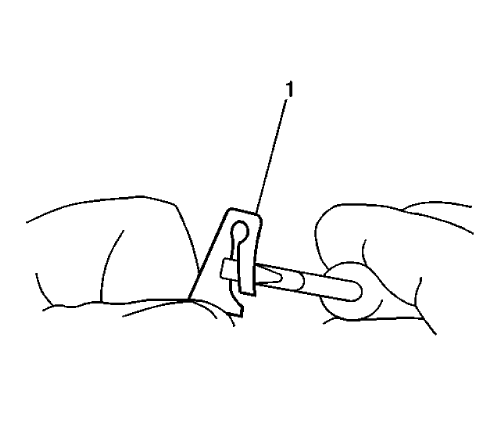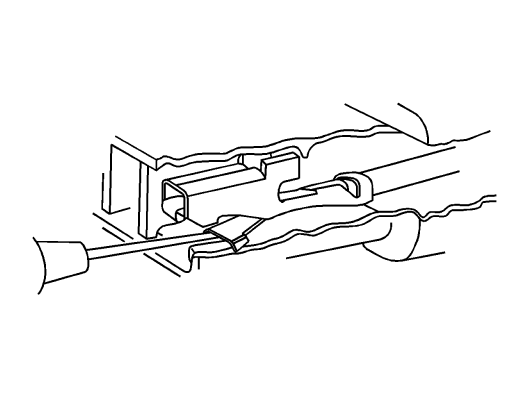Chevrolet Trax: Diagnostic information and procedures
WATERLEAK TEST PREPARATION
- GM vehicles are designed to operate under normal environmental conditions.
- The design criteria for sealing materials and components takes into consideration the sealing forces required to withstand the natural elements. These specifications cannot take into consideration any artificial conditions, i.e., high pressure car washes.
- The water leak test procedure has been correlated to the natural elements and will determine the ability of a vehicle to perform under normal operating conditions.
- The first step in diagnosing a leak is determining the conditions under which a leak occurs. If the general leak area can be found, the exact entry point can be isolated using a water hose or an air hose. Some trim panels or components may need to be removed in order to repair the leak.
- If leaks are found around a door, door window, rear compartment lid or liftgate area this does not necessarily indicate a bad weatherstrip. An adjustment to these areas may resolve the condition.
Watertest Stand Assembly
.gif)
Fig. 1: View Of Watertest Stand Assembly
.jpg)
.jpg)
- Assemble the water test stand as shown.
.gif)
Fig. 2: Illustrating How Water Spray From Stands Should Overlap Vehicle
- Position the stands as shown. The water spray from the stands should overlap the vehicle as shown.
- Have an assistant inside of the vehicle during the test in order to locate any leaks.
- The water pressure at the nozzle should maintain a 155 kPa (22 psi), for at least 4 minutes.

Fig. 3: Identifying Proper Water Spray Angles
- In order to check the windshield, aim the water spray 30 degrees down
and 45 degrees toward the rear.
Aim the water towards the corner of the windshield.\
- In order to check the side windows for leaks, position the water stand towards the center of the rear quarter, aiming the water spray 30 degrees down and 45 degrees toward the rear.
- In order to check the back window, aim the water spray 30 degrees down and 30 degrees toward the front.
RECOMMENDED MATERIALS (WATERLEAK REPAIR)
Recommended Materials (Waterleak Repair)
.jpg)
DUST LEAKS
Dust may leak into the vehicle where water will not. This happens particularly in the lower portion of the interior.
Forward motion of the vehicle can create a slight vacuum which pulls air and dust into the vehicle.
In order to determine the location of dust leaks, perform the following steps:
- Remove the mats from the floor.
- Remove the mats from the kick panel.
- Remove the insulation from the floor.
- Remove the insulation from the kick panel.
- Drive the vehicle on a dusty road.
- Examine the interior.
Dust in the shape of a small cone or slit will usually be found at the point of leakage.
- Mark the points of leakage.
NOTE: Ensure that the interior is darkened when performing this step.
- Shine bright lamps on the underside of the floor and the cowl.
- Have an assistant mark any points inside of the vehicle for any points where the light shines through.
- Inspect the weld joints.
- Inspect the body mounts.
- Seal any leaks with an air-drying, body-sealing compound.
WATER HOSE TEST

Fig. 4: Performing Water Hose Test
NOTE: Use a water hose without the nozzle attached.
- Have an assistant inside of the vehicle in order to locate the leak.
- Begin testing at the base of the window or the windshield.
- Slowly move the hose upward and across the top of the vehicle.
AIR HOSE TEST

Fig. 5: Performing Air Hose Test
CAUTION: The air hose test should only be used on fully cured urethane adhesive. Otherwise, damage to the urethane adhesive bead could result in additional leaks.
- Using a liquid detergent, diluted with water in a spray bottle, spray the window at the edges. Begin at the bottom and gradually move up and across the top.
NOTE: The compressed air should not exceed 205 kPa (30 psi).
- Have an assistant inside of the vehicle with an air hose.
- Have the assistant aim the compressed air at the suspected areas.
Bubbles will form in the soap solution at the location of the leak.

